Media | Articles
A brief history of the heated windshield
What’s your stance on heated windshields?
Frozen solid and armed with an ice scraper, if your car doesn’t have one. (Here all day, available for birthdays and open-mic sessions, etc.)
A heated windshield is the kind of feature you don’t know you need until Jack Frost pays a visit. Rather than arming yourself with an ice scraper or a can of de-icer, you’re able to sit in the comfort of your car while the heated glass works its magic. Your neighbors can only look on with envious eyes as ice or snow turns to water.
It’s even more miraculous if your car is of an age (or is a Caterham Seven) when ice forms on the inside of the windshield. We’ve all been there …
Charting the history of the heated windshield is trickier than clearing a layer of ice from the glass with a grocery-store rewards card. It almost certainly has its roots in the aviation history, as outlined in a journal published in 1986. In it, Lowell Bitter writes: “The history of the heated windshield begins with aircraft windshield heating in the 1940s using pyrolytic coatings. In the automotive field an unsuccessful attempt was made in the 1970s.”
Marketplace
Buy and sell classics with confidence
Bitter is referring to heated windshields fitted to the Lincoln Continental Mark IV and Ford Thunderbird. Ford’s optional Quick Defrost function could clear a windshield five times faster than conventional glass, without visible heating wires. From frost to clear view in just three minutes, which was likely faster than the 460-cubic-inch V-8 warmed up to operating temperature.
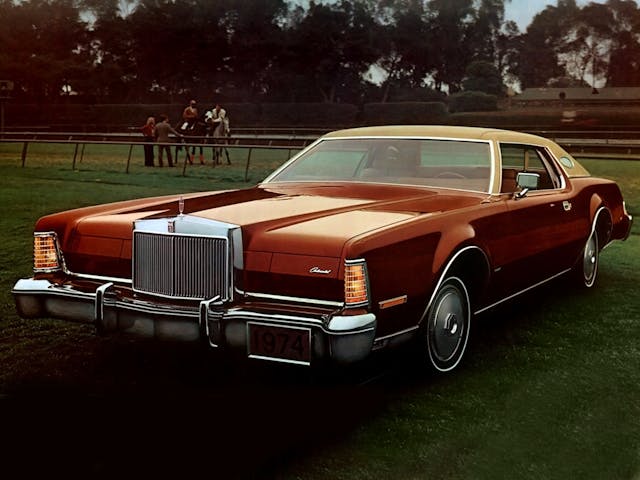
The rich and informative Automotive Mileposts website outlines the success, and failure, of Ford’s Quick Defrost system, which featured a transparent, thinly coated gold-bearing metallic film sandwiched between layers of polyvinyl butyral and glass. A second alternator fed an electric current to the film to clear the frost or ice.
It wasn’t cheap. In 1974, the Quick Defrost upgrade cost $306.70, the equivalent of $1,852.09 in 2022. At least the Mark IV owner had a distinctive gold tint to show the world that they’d splashed the cash.
Replacement screens were almost impossible to find, forcing owners into fitting conventional glass in the event of damage. “Fogging” was another issue if the Quick Defrost function wasn’t used on a regular basis, but unreliability sealed its fate, and the system was dropped.
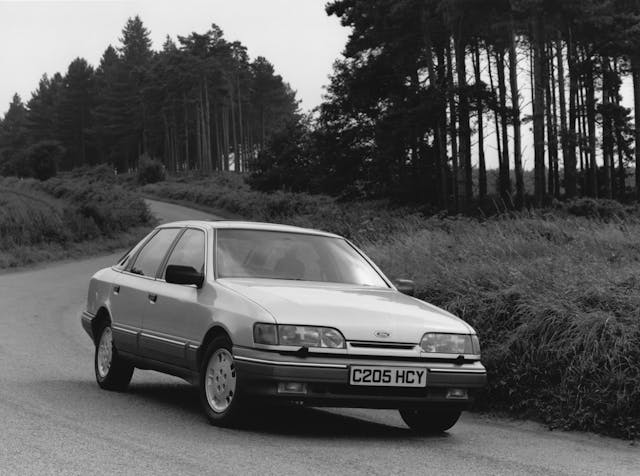
Ford’s use of the heated windshield was put on ice, but the spark was reignited in the 1980s. Dubbed Insta-Clear in the United States and the less evocative “windshield rapid de-ice” in Europe, Ford’s new and improved heated windshield debuted on the flagship Granada Scorpio over here and in the Taurus/Sable/Continental over there.
From the Taurus brochure: “Insta-clear Heated Windshield available on Taurus models with V-6 engine, is capable of removing 1/10 of an inch of frost at 0 degrees Fahrenheit in just two to three minutes.”
Rather than a layer of film, Ford’s new system used a barely visible mesh of silver and zinc-oxide wires placed between two sheets of glass. Like a heated rear window, an electric current would heat the wires, clearing the fog, ice, or snow.
As this memorable ad shows, the screen was produced by Pilkington under the Triplex name and labeled Hotscreen. Later, Ford trademarked the Quickclear name in Europe, which is still in use today. Contrary to popular belief, Ford didn’t own a patent on the tech, just a particular application of it.

Autocar wasn’t overly impressed with the technology. In a review of the Ford Granada Scorpio 4×4, it said: “At night, the view through heated front screen initially appears slightly hazy and street lights have a distinct starburst effect on the glass because a thin heating element is sandwiched into the laminated layers. This is just visible to the eye in certain conditions but is no real distraction once the driver is accustomed to it.”
Motor agreed, labeling the heating elements “distracting at night.” Insurance companies are likely to be more distracted by the cost of replacing a heated windshield in the event of a stone chip.
Ford’s ownership of other companies, most notably Jaguar and Land Rover, means you’ll find heated windshields on many cars. It was even fitted as standard on the previous-generation Vauxhall Corsa, which is far cry from the days when it graced the Lincoln Continental Mark IV.
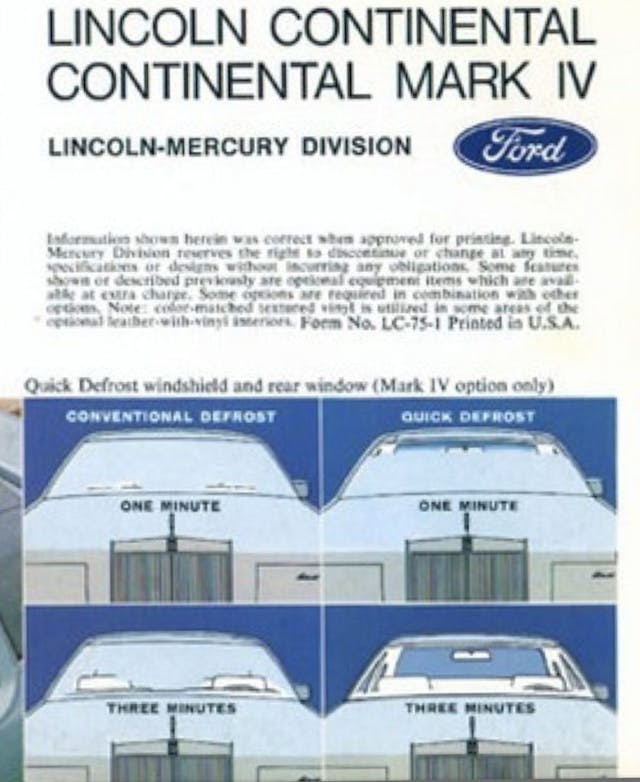
Interestingly, Ford has filed a patent for a heated side-window system, which could come in handy if you’re drifting a Focus RS or Mustang on a frosty morning. Related Ford patents include heated windshield camera viewing zones, heated wiper blades, steering wheel preconditioning and even a heated SecuriCode keypad. The heat is on, or something.
In the U.K., £1000 is enough to buy a used car with a heated windshield. Take your pick from dozens of Ford Focus Mk2s in Zetec Climate trim or, better still, a Focus Mk1 with a Quickclear screen—a future classic with a heated windshield for some winter fun.
Then there’s us poor sods stateside, who don’t enjoy the wonders of a heated windshield at such a low price point. Jaguar Land Rover is one of the few companies that offers it throughout their U.S. portfolio. American fans of the U.K-market Focus have hope, if they’re willing to go to much trouble; as of 2023, first-year Mk1s turn 25, qualifying them for U.S. import. —Ed.
Check out the Hagerty Media homepage so you don’t miss a single story, or better yet, bookmark it.






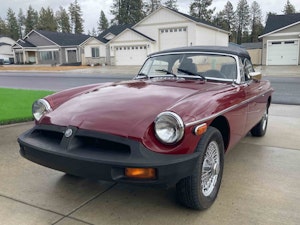
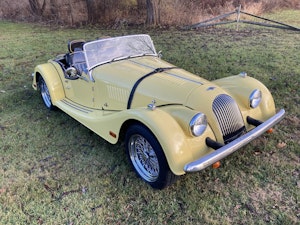


No thanks, Heated windshield as I understand, are like driving down the road with a reflective billboard saying with lights flashing and screaming horns “Here I am Enemy” they are great for radar traps and the like.
Caterhan Seven? I would include the Model A Ford.
I had it on my ‘88 Lincoln Continental…. had to roll down my window and hold the “Toll Tag” outside so that it could be read!
It was a Massachusetts Car that somehow ended up at a dealer in Dallas!
The heated windshield needs to be redeveloped and perfected…. even with a remote starter for the first thaw, sometimes driving in severe snow requires full blast defros and the passengers get cold….
Had a heated windscreen in my Beetle, since we all know there was no heat in a VW Beetle. Stuck on a plastic rear window heat sheet from JC Whitney. Works great. Before that idea I used small votive candles stuck to the dash. and they sort of heated the cab! Was it fun??
I have to believe that adding 1 conductive layer to the layered, laminated windshield, doesn’t have to increase its cost to manufacture 10-fold. Maybe 50%. We’re talking safety here. Thousands of $s are spent on other safety features and add-ons. Yet how many people get in and start driving without good visibility because it takes too long to scrape, they can’t reach the monster windshields on their SUVs and vans, or don’t have the strength to scrape or chip heavy ice, etc? If heated front glass can be done on some vehicles at a reasonable price point, then it should be done on ALL vehicles, and don’t you know, the price will come down.
There are two kinds. One is the embedded-wires type and the other is the tin or silver alloy evaporated onto the glass. This last usually has an uncoated area around the rear view mirror so a radar detector or tollway transponder will ‘see’ your pass or see Officer Friendly and his Revenue Collection gun. Sometimes windshield shops only have a heated glass in stock so thats what you get even if there’s no controller in the car for it. The wires are snipped off and the next owner goes nuts trying to find the non-existent control switch the next winter.
Honda has heated windshields in the Pilot / MDX and TLX in the lower quarter of their windshields where the wipers park. It is extremely effective. Leave it to Honda to get technology right that others could not.
My mom had a 1988 Mercury Sable with insta-clear….My 1991 Taurus SHO had it as well. Living in Western New York, I can attest that the system worked flawlessly on both vehicles, even during the worst ice conditions. Honda didn’t “perfect” this technology. Like most things Honda does well, they simply took existing technology and Honda owners made it out to be a breakthrough.
I had a 1984 911 Carrera with the lower 1/3 of the windshield heated with barely visible squiggly wires embedded in the glass. Everyone in New England leaves their wipers up in the air if there is a risk of ice or snow. Never had to. The 911 was a great winter car. At the time, Mass required glass coverage be included in all auto insurance policies. My insurer was not happy having to replace that windshield after a truck kicked a rock into it.
You’re paying to insure a Porsche 911. One doubts that you have the same coverage (or premium) that any mainstream Ford might have. Fortunately for your insurer, they’ve already factored in the cost of repair of a 911 when they had to replace yours. No 911 windshield is inexpensive….just as no insurer is happy to pay a claim.
A heated windshield is good and bad. When I lived in New England, one of my neighbors would put his blower and defroster on high. In the morning, he would remotely start the car and go back to sleep for an hour. Any snow left on the roof would be deposited on the road. Lazy, wasteful fuel usage, and excessive emissions. That’s why we’re in the shape we’re in. Tried talking to him about it but it fell on deaf ears.
Sounds like he wasn’t deaf…anyone would listen to one’s diatribe about wastefulness or lack of physical engagement and avoid one like the plague. He could hear just fine.
Gee didn’t the mid 90’s and early 2000 Plymouth and Dodge minivans have the elements in the windshields?
My Volvo has it on the front screen. A bit disconcerting at first but then you just sort of start to ignore it, like an annoying drone.
Nowadays, Remote Start is the best invention ever!!!
My 1974 Alpine-Renault A310’s windscreen was electrically headted as standard equipment…and my Escort radar detector worked fine.
I remember my grand parents having a 1992 Buick Roadmaster and I swore it had a heated windshield. Not sure why it did as they lived in AZ